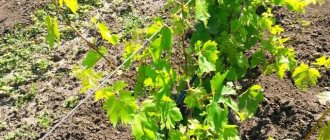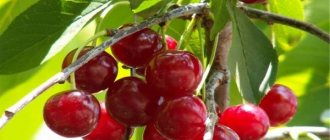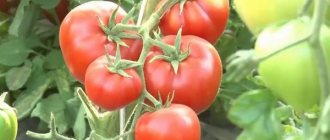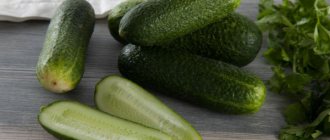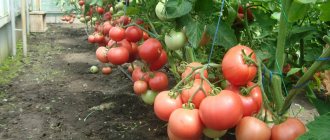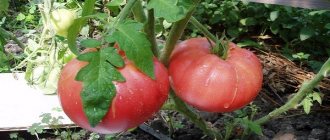This hybrid grape variety has many names. Originally from Bulgaria, we know him as Phenomenon or Augustine. You can also find the license plate name - V 25/20. Its parents are the varieties Villars Blanc and Pleven, which is why it is sometimes called Pleven resistant. From Pleven he took resistance to diseases, and Villars Blanc gave him resistance to adverse conditions.
Attention! Despite its southern origin, Augustine grapes are quite suitable for growing in the middle zone and even Siberia.
Characteristics of the variety
To find out why it is good, let’s study in more detail the description of the Augustine grape variety.
- it is a table form of grape;
- has a large bunch weighing up to 800 g, and with good care, much more;
- the bunch is loose, moderately dense, sometimes with a wing. This structure of the bunches contributes to their ventilation, and, therefore, reduces the likelihood of diseases. The bunches are not subject to peas, the berries are of the same size;
- The weight of the berries is average - up to 8 g; in the middle zone and Siberia such berries can be called large. There are up to 6 seeds in them, the skin is not hard, easy to eat;
- the berry has an elongated oval shape and a beautiful amber-yellow color, has a pleasant aroma, accumulates a lot of sugar in any weather - up to 20%, the berries are well transported without losing their marketable qualities;
- the taste of the berries is simple, but harmonious without a muscat tint;
- the red-brown vine has great growth vigor, so it can be used in arbor culture. The leaf is beautiful, almost undissected, its shape is close to round;
- Augustine is prone to overload with the harvest, so the number of brushes needs to be rationed, leaving no more than one per shoot;
- can withstand frosts down to -24 degrees, but not for a long time, so it is better not to leave it without shelter for the winter;
- Augustine grapes ripen in the early stages, from flowering to ripening should take from 115 to 120 days, therefore, with the early onset of heat in the spring, they can be harvested already in August;
- brushes can wait up to 2 weeks for harvest after ripening without losing their consumer qualities.
Winegrowers often call the Augustine grape variety a “workhorse.” And not without reason. Unpretentiousness, resistance to major grape diseases and simply amazing yield (in private farms - up to 60 kg per bush) make this variety a welcome guest in any vineyard. And if you add to this the pleasant taste of sweet berries, good ripening of the vine, excellent survival rate of seedlings and excellent rooting of cuttings, it is clear that it will have few competitors.
The characteristics and description of the Augustine grape variety would be incomplete without mentioning its shortcomings:
- with prolonged high humidity, the berries can crack;
- the seeds in the berries are quite large;
- since it is a table variety, it is not very suitable for making fruit wine;
- It is not recommended to keep the bunches on the bushes for more than 15 days, otherwise the berries will begin to fall off.
These shortcomings do not prevent winegrowers from successfully growing the Augustine grape variety in vineyards located in far from southern conditions; their reviews of this variety are the best.
To have a complete picture of Augustine, let's look at his photo.
In order for the Phenomenon to show everything that it is capable of, you need to plant it correctly, trim and pinch it in time, fertilize it, in a word, follow all the necessary rules of agricultural technology. Let's look at everything in order.
Reviews
Ekaterina Shipova, Nizhny Novgorod: I would like to share my review of Augustine grapes. According to the description, the variety is early ripening, but apparently not for our area. On a young plant, it is important to control the number of ovaries on the shoots and spare no effort in removing excess ones. Otherwise, you can get a lot of unripe fruits and unripe vines.
Lyudmila Nikolaevna, Krasnodar: Augustine grapes, even after a period of heavy rains (and, as a result, poor pollination), produced a decent harvest. Therefore, when choosing this variety, it is difficult to be left without tasty fruits.
Anastasia, Tula: This is our first experience in growing grapes. It is unpretentious and with proper care shows excellent results. The first decent harvest was obtained only in the fifth season. However, the plant is not to blame here. But the fruits turned out very juicy and sweet.
Reproduction
Any method will do for him. If you want to get a harvest faster, buy a ready-made two-year-old Augustine grape seedling.
Warning! Seedlings should be purchased from trusted nurseries.
Cuttings from annual shoots can be rooted or grafted onto a selected rootstock. This method is quite cheap and, if you have experience, simple.
For mass cuttings and rooting of cuttings, it is better to use a special cutting box with heating in the lower part.
You can sow grape seeds after two months of stratification. The best time for sowing in the middle zone is the first ten days of June.
Attention! Grapes propagated in this way begin to bear fruit in 4-5 years.
Seedlings obtained from seeds are better adapted to environmental conditions, but most often do not reproduce the parental qualities.
If you already have one Phenomena bush and you want to propagate it, this can be easily done by digging up a side shoot in the spring. By next spring it will be ready for independent growing season.
Diseases and pests
Oidium
Mildew
Gray rot
Birds
Grasshopper
Phylloxera
One of the most mentioned benefits of Augustine is its high resistance to diseases and pests. However, without timely prevention (spraying with fungicides) and with careless care, grapes are affected by diseases such as:
- oidium;
- mildew;
- gray rot.
All kinds of birds love to eat this variety. The most effective protection against them is a net or nylon tights individually for each bunch.
Also dangerous to grapes are insects: grapeworm and phylloxera. Bordeaux mixture, copper sulfate, and slaked lime are great for them.
Landing
Augustine grapes love fairly fertile and moist soils. The area should be illuminated by the sun throughout the day; even slight shading will affect both the yield and the timing of ripening.
Advice! In the middle zone and Siberia, spring planting of grapes is preferable, so that the seedlings have time to get stronger over the summer.
In grapes, nutrition is carried out through the heel roots; dewy surface roots are also important, but in severe winters they can easily die, so the holes for grapes should be at least 80 cm deep. There is no need to get too carried away with fertilizers. Two buckets of fertile soil mixed with 300 grams of superphosphate and the same amount of potassium salt are enough.
Warning! Do not forget to pour a layer of drainage, for example, 10 cm thick crushed stone, onto the bottom of the hole.
If a seedling is being planted, the root collar cannot be buried; it is better to plant the rooted cutting deeper so that the heel roots are inaccessible to frost.
When planting, bury a piece of small-diameter asbestos pipe next to the bush - it is convenient to feed grapes through it, provided that it is buried deep enough.
The planted plant needs to be watered and done this every week until it takes root, especially in dry weather.
Peculiarities
Augustine grapes are considered an unpretentious garden crop. However, before planting a variety in an open soil layer, it is recommended to familiarize yourself with its positive and negative qualities.
| Advantages | Flaws |
| Has high yields. | The fruit contains a large number of large seeds. |
| Does not require special care after planting in open areas. | The variety does not tolerate excessive moisture. |
| Characterized by early fruit ripening. | If the grapes are exposed to direct sunlight, the fruits will quickly lose their juiciness. |
| Fully ripened grapes have good transportability. | |
| The variety is not subject to peas. | |
| It has increased frost resistance and decorative properties. |
Augustine grapes are in great demand among winegrowers. It can be cultivated in garden plots and plantations. The variety is unpretentious, so it can be grown by those who have not previously planted grapes.
A description with photos and reviews will help novice growers of the crop to properly plant grapes in open areas so that in the future they can harvest a bountiful harvest every year.
Feeding
In the first year, Augustine grapes have enough nutrition that they received during planting. Only in autumn should the bush be sprinkled at the base with a layer of humus 20 cm thick. The purpose of this procedure is twofold: it is both good insulation for the roots in winter and fertilizing, which begins to act in early spring.
Subsequently, Augustine grapes are fed three times per season: in the spring with the predominance of nitrogen, a couple of weeks before flowering with the predominance of superphosphate, and with the beginning of ripening of the berries - only with potassium and phosphorus fertilizer. Application rates are always indicated on the fertilizer packaging. Augustine grapes respond gratefully to foliar feeding with complex fertilizers with microelements.
Where are the fruits used?
Thanks to their thick skin, the grapes tolerate transportation well, so they are used for sale. If there are no damaged fruits on the brush, it will last in the refrigerator for up to 2 months. The berries are also used to make dried fruits, juices and winter preparations. Fruit sugar is so sensitive that it allows grapes to be consumed fresh.
Owners of personal plots often prefer the Augustine variety for its disease resistance and good yield. Sweet fruits are not damaged by insects, which is another big plus, and they are also suitable for transportation. Bushes grown in proper conditions will certainly delight their owners.
Bush formation
Without this procedure, you can get a huge number of shoots and a meager harvest. To prevent this from happening, you need to follow the rules of formation at all stages of the grape growing season.
In the first year after planting, the bushes are not formed so that they grow enough shoots to overwinter.
In the future, the bush is formed according to the chosen scheme, taking into account that the Augustine vine needs to be pruned in the fall, maintaining from 6 to 12 buds. Their number depends on the chosen formation scheme.
Warning! Experienced winegrowers do not recommend pruning a grape bush in the spring unless absolutely necessary; the vine may simply bleed out its juice and die.
In summer, formation comes down to pinching the stepsons. Since the Phenomenon grape variety is rich in yield, 5-6 leaves should be left above each cluster. It is better to remove second-order stepchildren so as not to thicken the bush. At the end of summer, the shoots are chased, that is, their tops are pinched for better ripening of the vine.
You should approach pruning grapes creatively, taking into account the characteristics of each bush.
What does a plant look like?
The vine of the plant grows quickly and is strong. The lignified part is covered with brown bark. The green mass also grows quickly. Large leaves have a bright green tint. They do not cover the bunches, so they do not require additional pruning. The diameter of the flowers reaches 3-5 millimeters. They have a light green tint. The shrub does not require pollinators, due to the presence of bisexual flowers. The variety itself can serve as a pollinator for other hybrids.
The bush produces 85 percent of fruitful shoots. When pruning, you should leave the strongest ones. It is not recommended to leave thin upper shoots. Each vine has a load of 1-2 bunches. To get good harvests, you need to prune correctly. The shoot is eliminated to 8-12 buds. It is recommended to carry out fan formation. There are up to 40 shoots per bush.
Augustine grape is a strong plant with beautiful bright leaves
Sheltering grape bushes for the winter
Where winters are frosty, this technique cannot be avoided. There are many methods of shelter; each winegrower chooses the most convenient and effective one for himself. It is important that under the shelter it is not only warm, but also dry, then the grapes will not dry out.
Augustine grapes are an excellent choice for those who are just starting to engage in such an exciting activity as viticulture, because experienced winegrowers already have at least one bush of this wonderful variety.
Origin
The Augustin variety, along with other varieties of Pleven, was bred at the Institute of Viticulture (Bulgaria, the city of Pleven). Breeders pursued the goal of creating a variety with the taste properties of Pleven and increased resistance to frost, diseases and pests, like Villars Blanc.
The result exceeded all expectations: at bottling competitions this grape always receives high marks from the jury, and winegrowers everywhere strive to grow Augustine in their plots.
